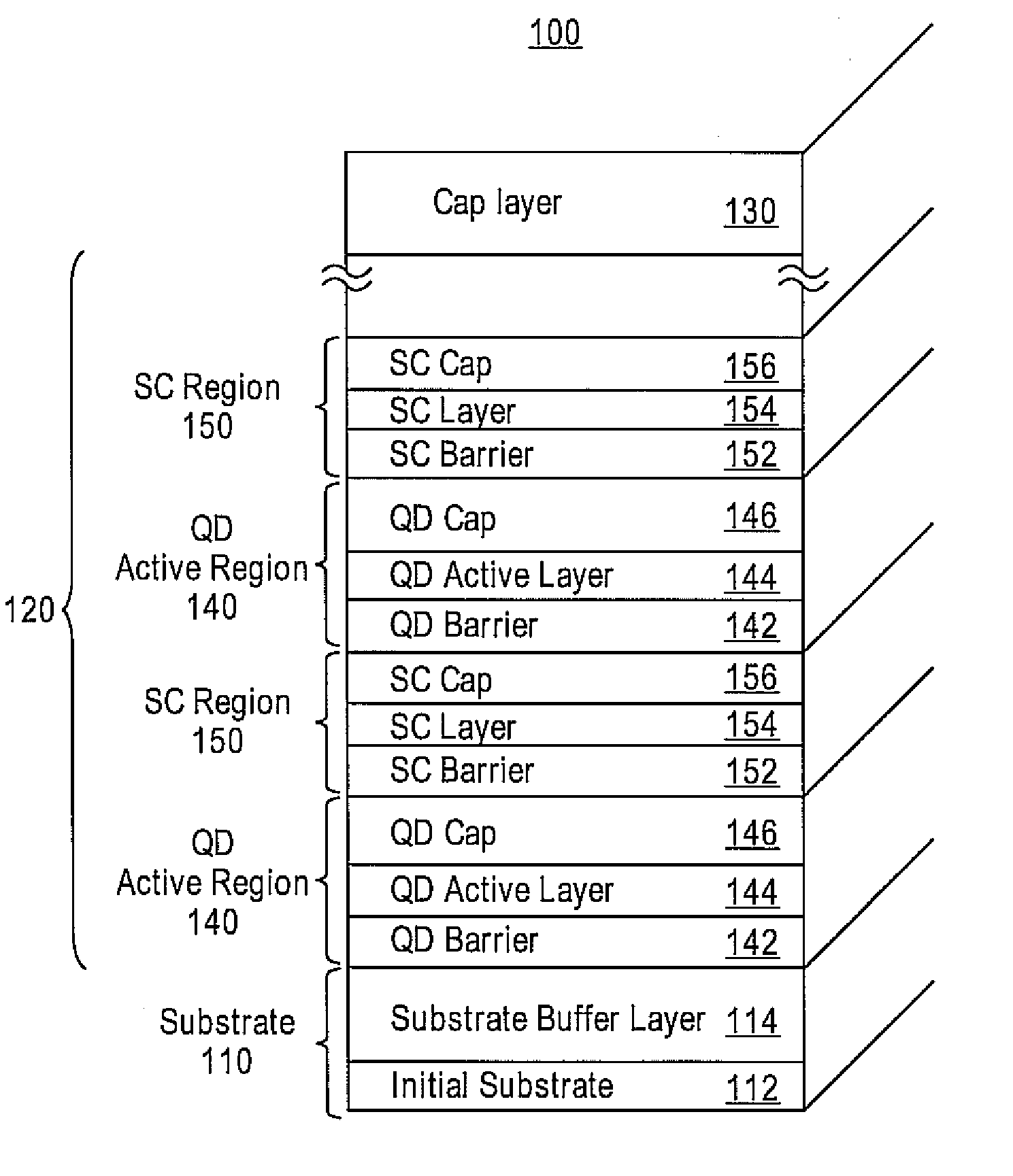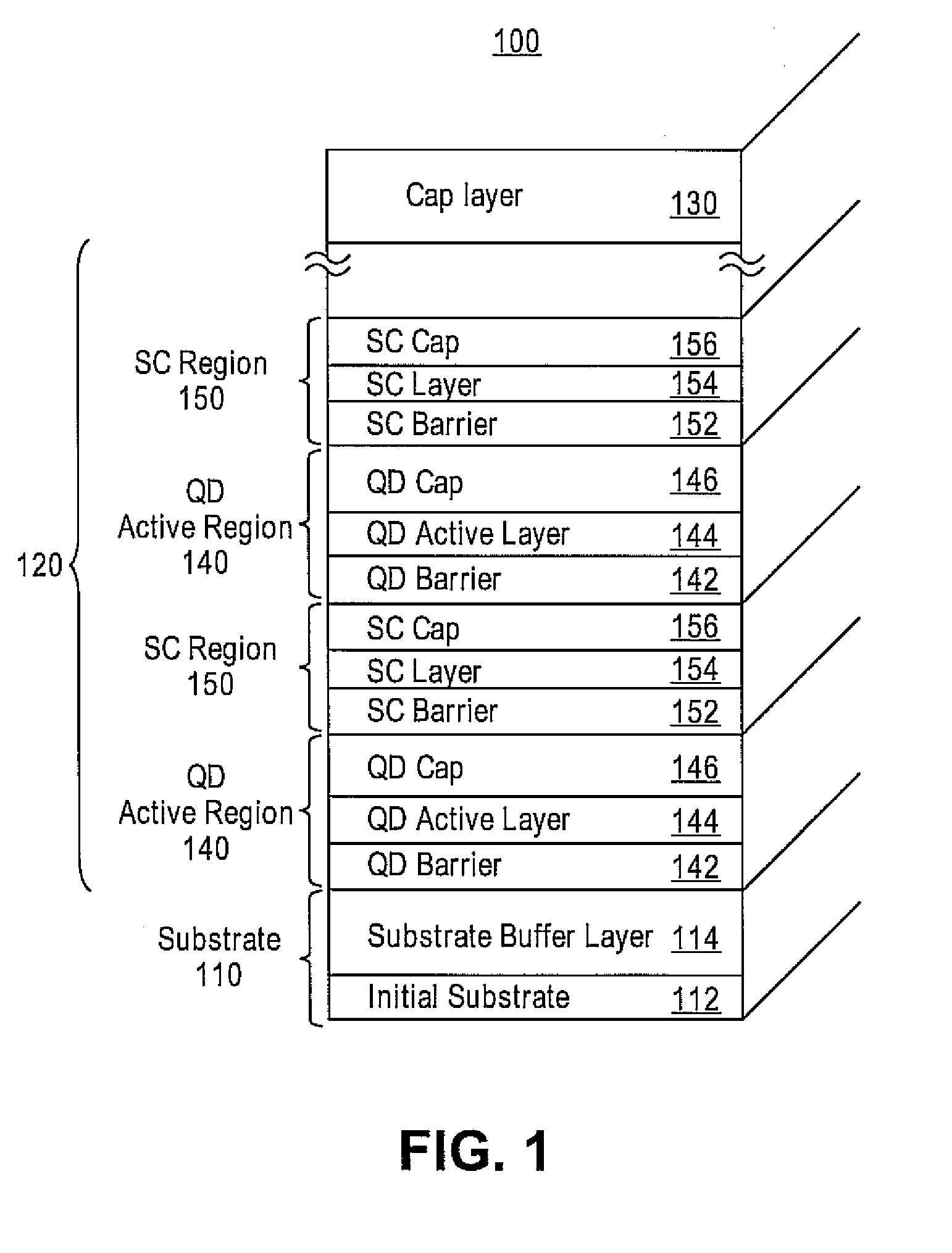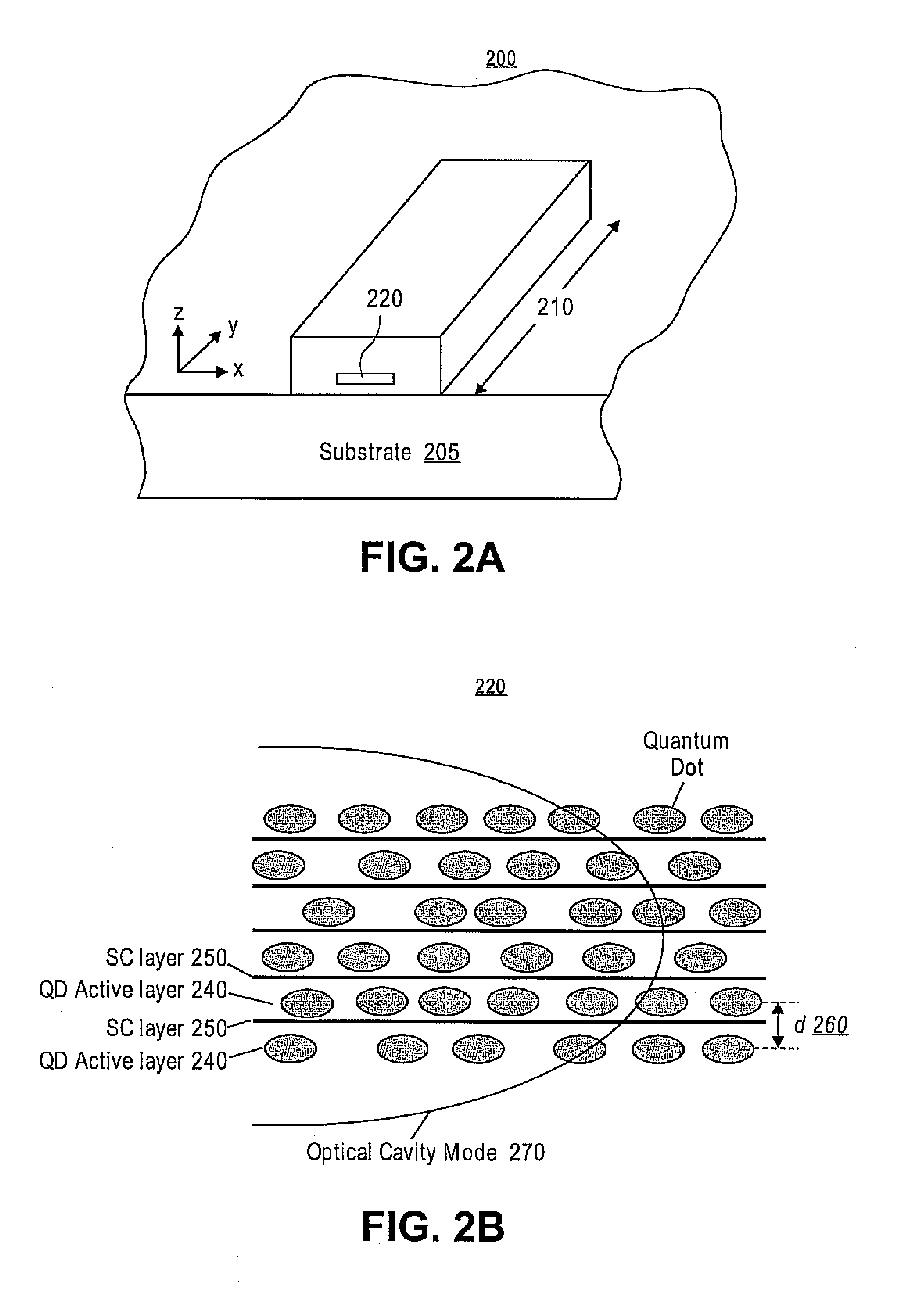Densely stacked and strain-compensated quantum dot active regions
a quantum dot active region, densely stacked technology, applied in the direction of active medium materials, lasers, semiconductor devices, etc., can solve the problems of low modal gain, low qd active region, drawbacks and disadvantages of conventional techniques
- Summary
- Abstract
- Description
- Claims
- Application Information
AI Technical Summary
Benefits of technology
Problems solved by technology
Method used
Image
Examples
Embodiment Construction
[0019]Embodiments provide a QD active structure and a methodology for forming the QD active structure with densely-stacked and strain-compensated QD active regions. More specifically, strain-compensation (SC) regions may be formed to alternate with the QD active regions to eliminate the compressive strain of each QD active region. An SC region may include an SC layer, which may be a tensile layer used for counterbalancing the strain of an adjacent QD active region. Thus, the SC layer may allow desired stacking of the QD active regions while still realizing closely spaced QD layers, and resulting in a increased modal gain for the QD active region.
[0020]Reference will now be made in detail to exemplary embodiments of the invention, an example of which is illustrated in the accompanying drawings. Wherever possible, the same reference numbers will be used throughout the drawings to refer to the same or like parts.
[0021]In the following description, reference is made to the accompanying ...
PUM
 Login to View More
Login to View More Abstract
Description
Claims
Application Information
 Login to View More
Login to View More - R&D
- Intellectual Property
- Life Sciences
- Materials
- Tech Scout
- Unparalleled Data Quality
- Higher Quality Content
- 60% Fewer Hallucinations
Browse by: Latest US Patents, China's latest patents, Technical Efficacy Thesaurus, Application Domain, Technology Topic, Popular Technical Reports.
© 2025 PatSnap. All rights reserved.Legal|Privacy policy|Modern Slavery Act Transparency Statement|Sitemap|About US| Contact US: help@patsnap.com



